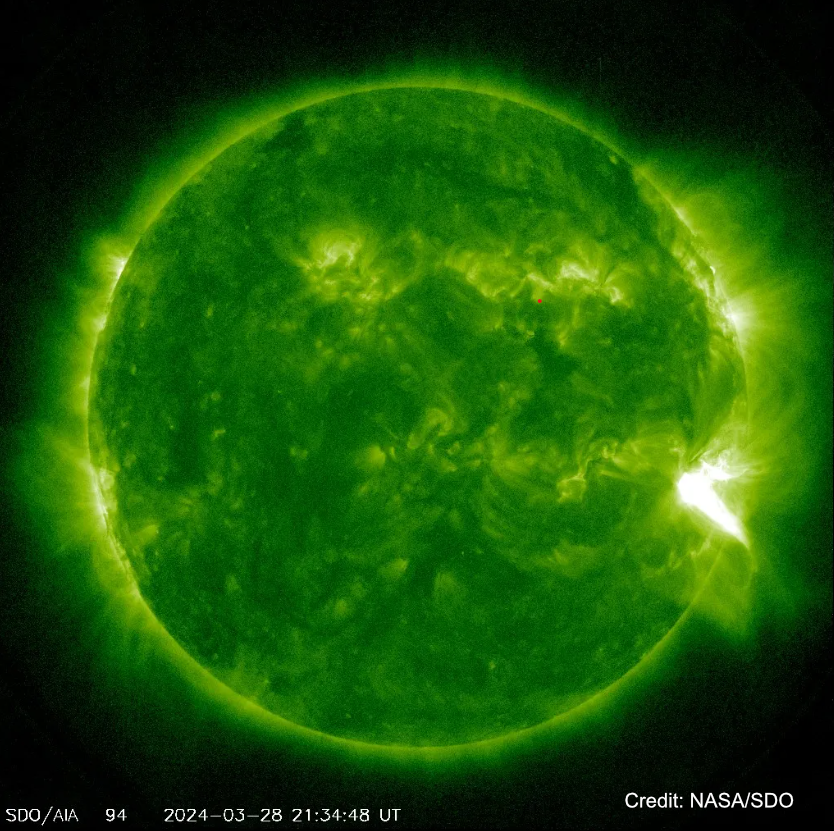On March 28, 2024, at 4:56 p.m. ET, NASA’s Solar Dynamics Observatory recorded a potent solar flare erupting from the Sun. This remarkable space spectacle was classified as an X1.1 flare, a category denoting its intense energy output. The event potentially impacts Earth’s navigation signals, radio communications, electric power grids, and even onboard astronauts and spacecraft.
According to data from NASA, solar flares are substantial bursts of energy, with those tagged X-class being the most powerful. The numeric indicator provides further insight into their strength. With this recent X1.1 classification, the flare ranks high in energy emission, albeit somewhat less potent than the record-breaking flares of yesteryears.
The Solar Dynamics Observatory is part of NASA’s robust fleet continually monitoring the Sun and the broader space environment, ranging from solar activity to particles and magnetic fields in the vicinity of Earth. The U.S. government’s official source for space weather forecasts, watches, warnings, and alerts is NOAA’s Space Weather Prediction Center.
For context, below are some notable solar flares recorded throughout history, with their intensity classifications and dates:
- November 4, 2003 (X28+): Recognized as one of the most formidable flares.
- April 2, 2001 (X20), August 16, 1989 (X20): Massive flares causing satellite disruptions and radio blackouts.
- October 28, 2003 (X17.2): Part of the infamous “Halloween solar storms”.
- September 7, 2005 (X17), August 24, 1990 (X9.4), May 13, 2013 (X8.7): Significant flares occurring among a series of substantial solar events.
- March 6, 1989 (X15), December 5, 2006 (X6.5), November 2, 2003 (X4.9): Flares associated with impactful solar occurrences.
Information Box:
– Solar flares can affect Earth’s technology heavily, thus requiring constant monitoring and early warning systems.
– The strength of a solar flare is classified into five categories—A (lowest), B, C, M, and X (highest).
– Each category has a tenfold increase in energy output compared to the one before it.
– The X-class gets a numerical suffix representing its intensity range within the category. X2 is twice as powerful as X1, and so forth.
Reference 2: NOAA’s Space Weather Prediction Center
Reference 3: Historical record of solar flares
References:
Reference 1: NASA’s Solar Dynamics Observatory
Reference 2: NOAA’s Space Weather Prediction Center
Reference 3: Historical record of solar flares

